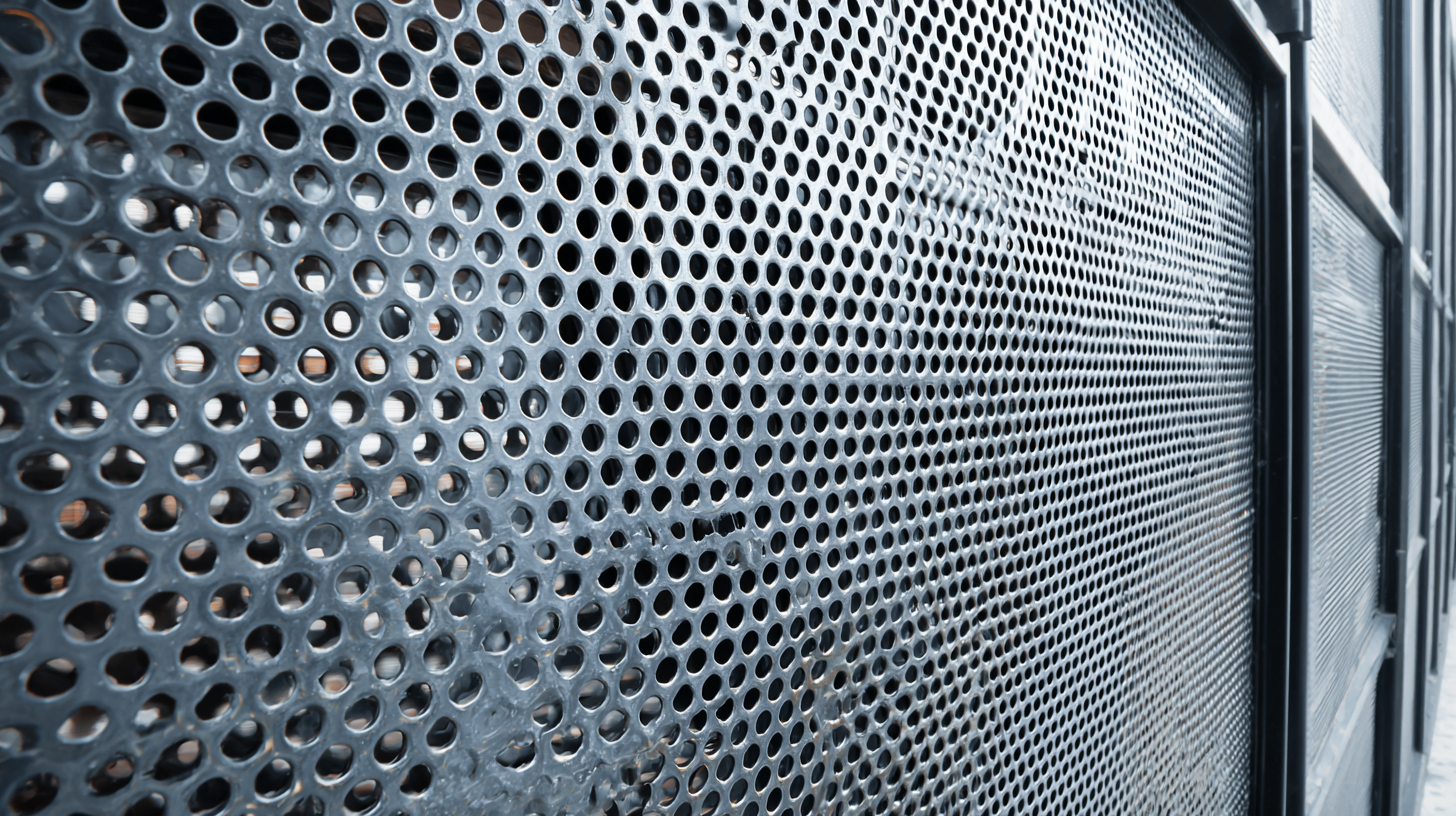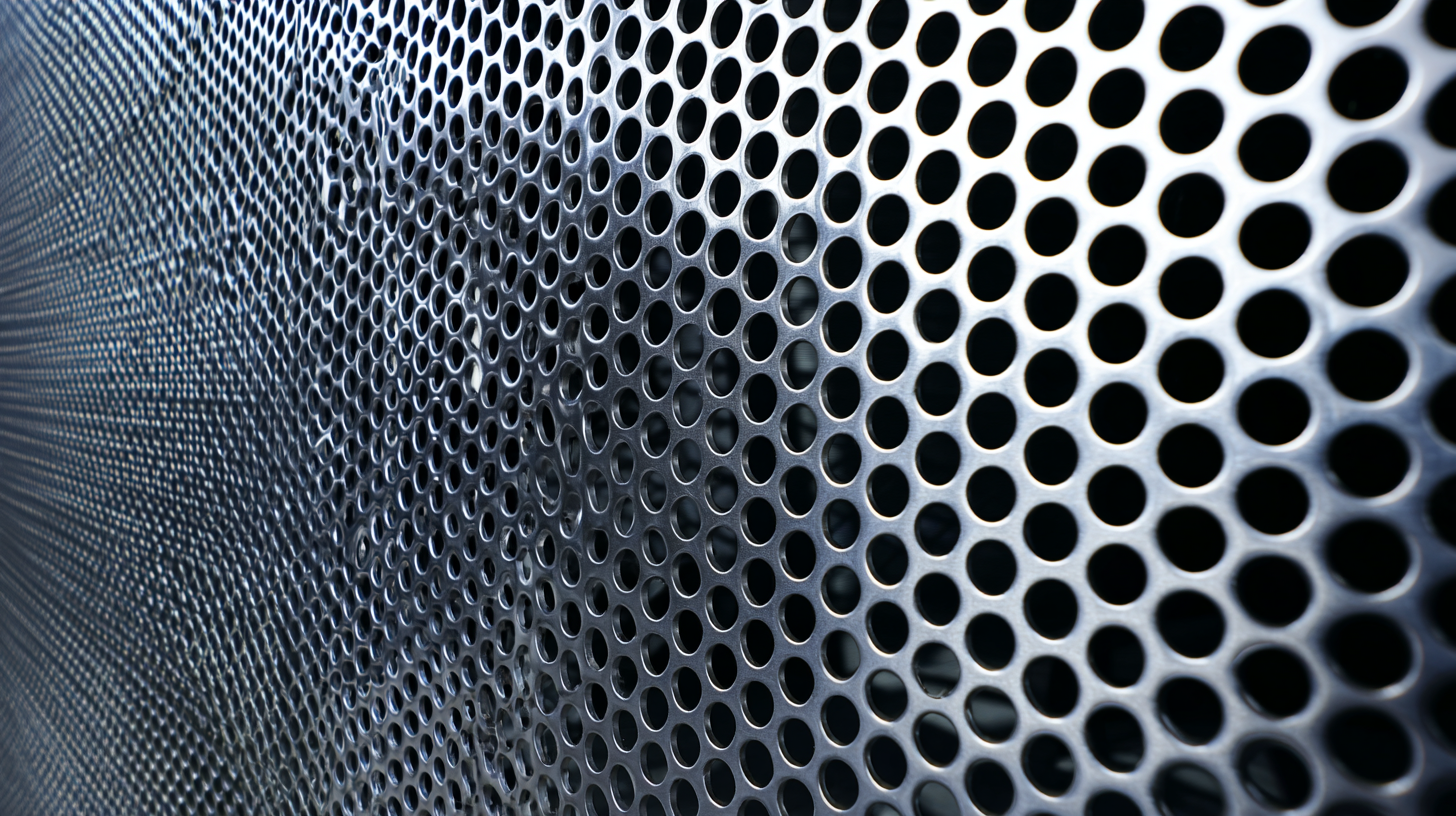In 2025, the demand for Perforated Metal Screen Panels continues to rise, driven by advancements in manufacturing processes and an increasing focus on sustainable design. According to a recent industry report by MarketsandMarkets, the global perforated metal market is expected to reach $2.7 billion by 2025, growing at a CAGR of 5.3% from 2020. This growth is largely fueled by the architectural, automotive, and filtration sectors, where these panels are utilized for aesthetic, functional, and safety purposes. As various industries seek to enhance their products with innovative materials, selecting the right perforated metal screen panels becomes crucial.

This ultimate checklist aims to guide you through the important considerations and key features to look for, ensuring that you make informed decisions aligned with industry standards and future trends.
When choosing perforated metal screen panels for your project, there are several key factors to consider that can significantly impact your decision. First and foremost, the material of the panels is crucial. Different metals, such as aluminum or stainless steel, offer varying degrees of durability, aesthetic appeal, and resistance to environmental factors. Additionally, consider the thickness of the material; thicker panels may provide better strength and sound insulation, which is essential for certain applications.
Another important factor is the perforation pattern and size, as these directly influence the panel’s functionality and design. Depending on whether your goal is to enhance air circulation, allow light passage, or provide visual privacy, the choice of hole shape and size should align with these needs. Lastly, don’t overlook the finish of the panels. A well-chosen finish can enhance corrosion resistance and achieve a specific look that complements your architectural vision. By taking these considerations into account, you can select the best perforated metal screen panels that meet both practical requirements and aesthetic preferences.
When selecting the best perforated metal screen panels, understanding the materials involved is crucial. Perforated metal screens can be manufactured from various materials, each offering unique benefits and suitability for different applications. According to a report by the Freedonia Group, the demand for perforated metal products is projected to grow at an annual rate of 5.3% through 2025, primarily driven by advances in material technology that enhance performance and durability.
 Aluminum is among the most popular materials due to its lightweight nature and corrosion resistance. It is particularly favored in the architectural and automotive industries. In contrast, stainless steel is known for its strength and longevity, making it an excellent choice for industrial applications. A study by TechNavio indicates that the market for stainless steel perforated panels is expected to witness a significant surge, thanks to increasing construction activities globally.
Aluminum is among the most popular materials due to its lightweight nature and corrosion resistance. It is particularly favored in the architectural and automotive industries. In contrast, stainless steel is known for its strength and longevity, making it an excellent choice for industrial applications. A study by TechNavio indicates that the market for stainless steel perforated panels is expected to witness a significant surge, thanks to increasing construction activities globally.
Additionally, there is a growing interest in using galvanized steel for applications that require additional protection against wear and tear. The NACE International report highlights that galvanized surfaces can improve lifespan by 50% over uncoated metals, showcasing the importance of material selection in enhancing the performance and cost-effectiveness of perforated metal screens. Understanding these material characteristics will help buyers make informed decisions tailored to their project needs.
When selecting perforated metal screen panels, analyzing hole patterns and sizes is crucial for achieving optimal functionality. Different applications necessitate specific hole configurations to meet various criteria such as airflow, visual aesthetics, and structural support. For example, larger holes may promote greater airflow and light transmission, making them ideal for applications in HVAC systems or decorative facades. Conversely, smaller holes can provide privacy and security while still allowing some degree of visibility and ventilation, which is particularly useful in safety applications or noise reduction scenarios.
Understanding the relationship between hole patterns and panel performance is essential. Regularly spaced holes deliver uniform aesthetics and functionality, while irregular patterns can create unique visual effects. Additionally, considerations such as the spacing between holes and the thickness of the material play a vital role in the panel's strength and longevity. By meticulously assessing these factors, one can select perforated metal screens that not only meet aesthetic preferences but also perform reliably in their intended environment, ensuring they serve their purpose effectively and efficiently.
| Hole Pattern | Hole Size (mm) | Material Type | Thickness (mm) | Open Area (%) | Typical Applications |
|---|---|---|---|---|---|
| Round | 5 | Aluminum | 2 | 40 | Architectural Facades |
| Square | 10 | Stainless Steel | 1.5 | 35 | Safety Guards |
| Slotted | 8 x 3 | Mild Steel | 3 | 50 | Industrial Screens |
| Diamond | 12 | Copper | 2.5 | 45 | Decorative Screens |
| Custom | Varied | Bronze | 4 | 60 | Unique Architectural Features |
When selecting perforated metal screen panels, evaluating their durability and maintenance requirements is crucial to ensure long-lasting performance. The strength of the material plays a significant role in its lifespan. According to industry reports, high-quality perforated panels made from corrosion-resistant metals can last significantly longer, reducing the frequency of replacements. Choosing materials that withstand environmental stressors can minimize maintenance needs over time.
Tips: Consider panels with a protective coating to enhance their resistance to wear and tear. Regular inspections can identify potential issues early, preventing larger problems that may arise from neglect.
Additionally, maintenance practices should align with the intended use of the screen panels. For instance, panels in industrial settings may require more robust cleaning solutions compared to those in residential applications. A systematic review of industrial practices indicates that proactive maintenance can reduce operational downtime and costly repairs. Ensuring that your selection process incorporates these evaluations will help in making a wise investment that meets both durability and maintenance criteria.
Tips: Establish a scheduled maintenance routine and utilize appropriate cleaning supplies to extend the life of your screen panels.
When selecting perforated metal screen panels, cost considerations play a crucial role in the overall budgeting process. According to a report by MarketsandMarkets, the global perforated metal market size is projected to reach approximately $2.5 billion by 2026, growing at a CAGR of 7.3%. This growth is driven by demand in diverse applications such as architecture, HVAC, and industrial filtration. Consequently, understanding the cost dynamics of these panels is essential for achieving optimal budgeting.
Analyzing material costs, fabrication processes, and finishing treatments will help determine your budget. For instance, the cost of aluminum perforated sheets averages around $3 to $5 per square foot, while stainless steel can range from $4 to $8, highlighting the importance of material selection in your financial planning. Additionally, choosing intricate designs may involve increased fabrication costs, often driving up the total expenditure. A focused approach to budget allocation—not only considering initial costs but also long-term durability and maintenance—can significantly influence the overall project expense.

